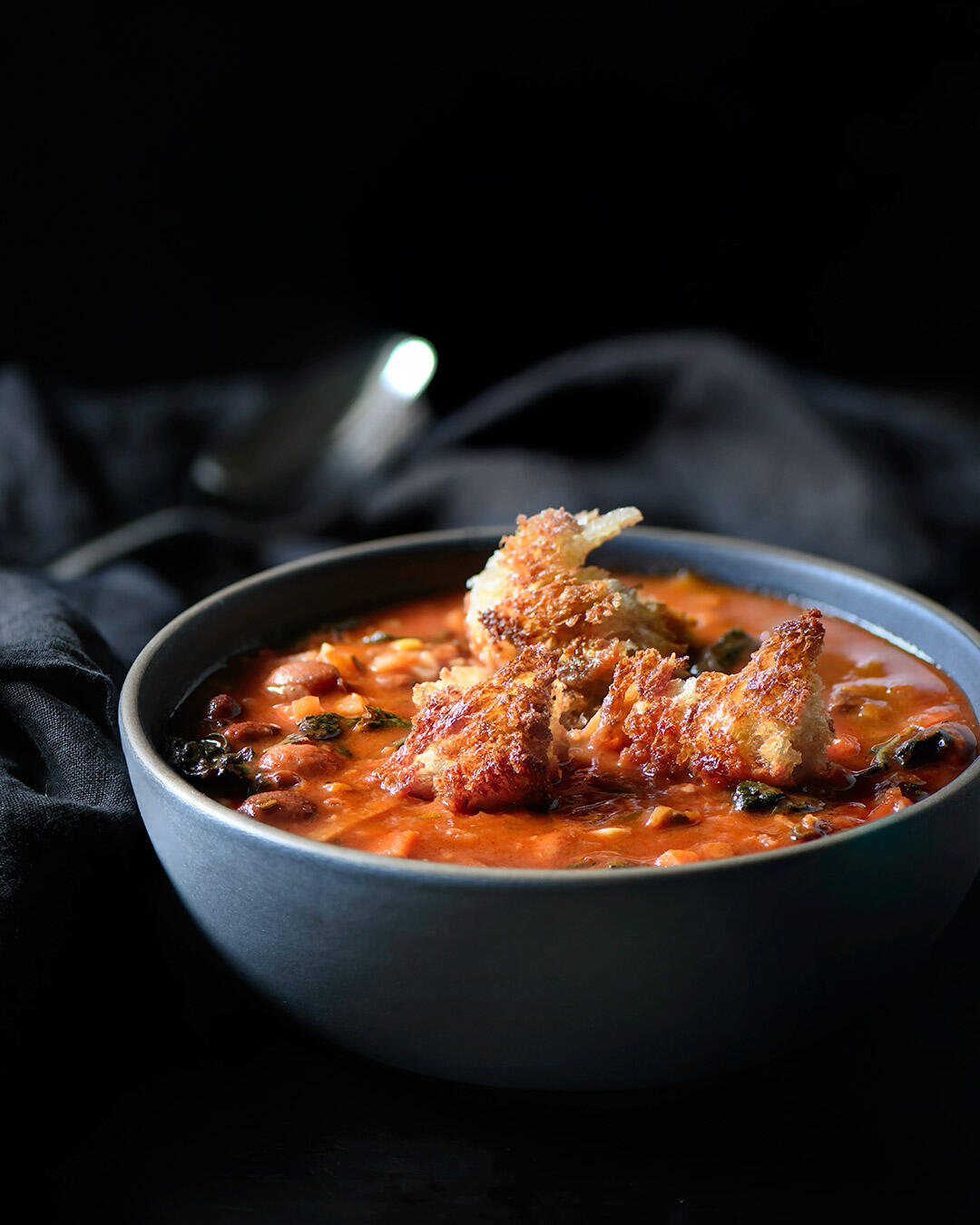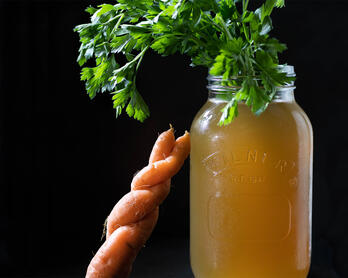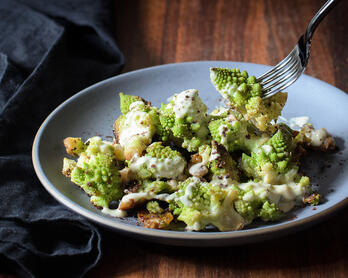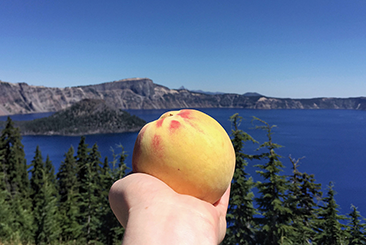Rustic Bean Stew

Rob and I have been planning some trips with the Airstream and a few are a bit more remote with little access to restaurants and stores. You could say we're starting to "camp" more than before.Camping is relative. Soups and stews are a great food for the coach but my repertoire is thin so I've been on the hunt.
When I picked up Jeremy Fox's cookbook On Vegetables a few months ago, the Rustic Bean Stew immediately went onto the recipe planning board. Fox is a Santa Monica chef as well as a solid supporter of Southern California growers. Not only is his bean stew travel friendly, but virtually every ingredient comes from either the farmers market or a local business. This intensely flavored meal has pressing notes of rosemary, complementary textures of silky kale and creamy beans, and also happens to be all the things - dairy free, vegan, and vegetarian. I am none of those things but appreciate a delicious dish that is.
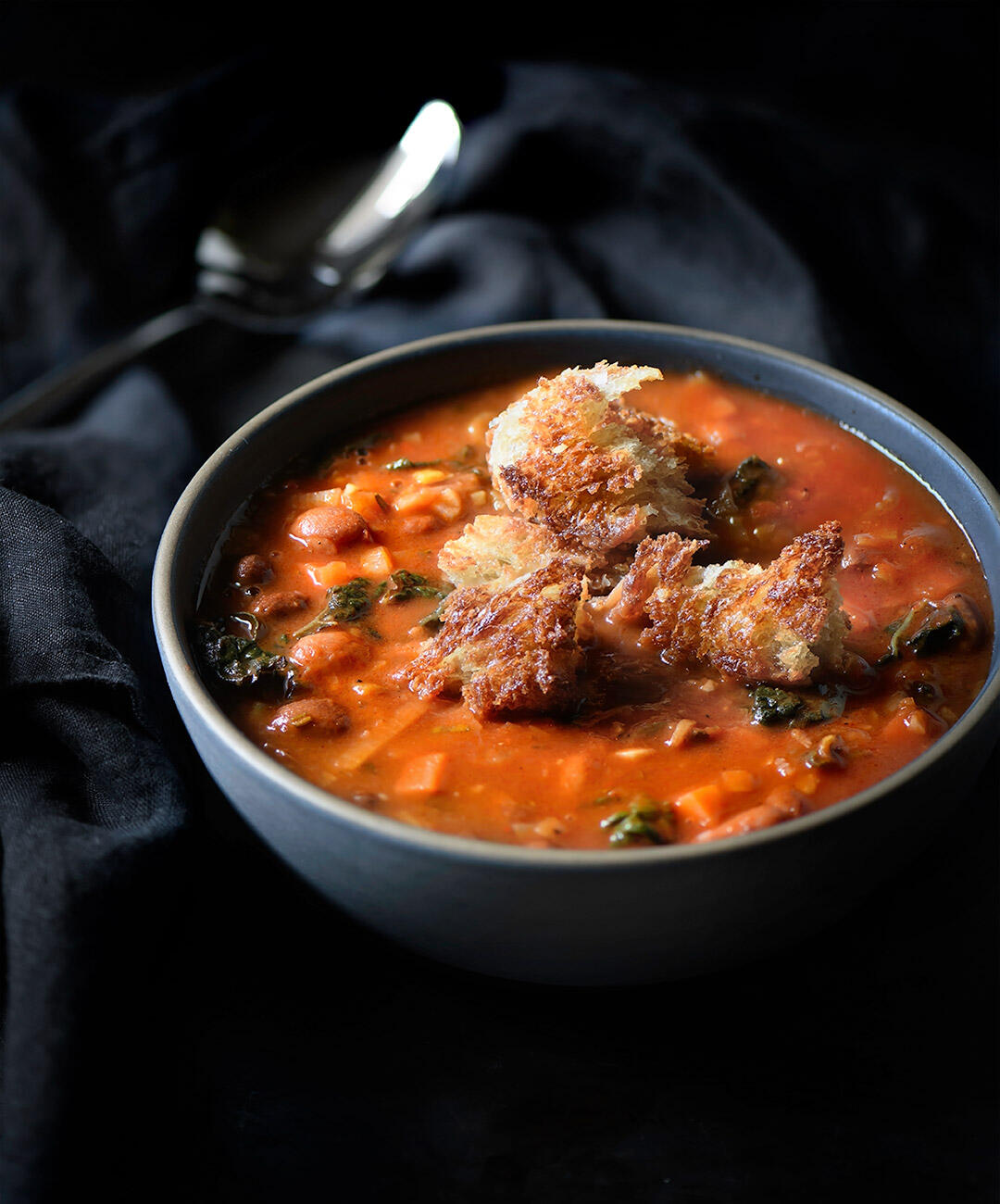
Relevant Revelation: Hemicellulose
This is one of those food science words that's not only fun to say, but it's also a revelation once you discover its relevance in cooking.
When I first made the Rustic Bean Stew, I was worried about overcooking the vegetables during the final 15 minutes. This hesitation resulted in carrots and celery with too much bite for the final product. I now cook the veggies all the way to the desired texture and they hold that consistency even as I finish the dish.
While typing out the above tip, my brain wandered (as it tends to do) and I flashed back to my mother-in-law explaining that she doesn't put the tomato sauce on her eggplant parmesan until it's partially baked otherwise the vegetables won't soften. Some dots began to connect so I put down my keyboard and flipped open Salt, Fat, Acid, Heat. Sure enough, there's an entire page on the subject.
"Acid keeps vegetables and legumes tougher, longer. Anything containing cellulose or pectin, including legumes, fruits, and vegetables, will cook much more slowly in the presence of acid. While ten to fifteen minutes of simmering in water is enough to soften carrots into baby food, they'll still be somewhat firm after an hour of stewing in red wine. "
I then took The Google for a spin and learned that cellulose, pectin, and hemicellulose primarily serve a structural role in plants. In terms of their impact on cooking, much of the sciencey articles seemed to focus on pectin and hemicellulose. Specifically, when the pH is neutral to alkaline (think boiling water), hemicellulose readily breaks down. The opposite is true when the pH of a liquid is acidic as is the case with tomato sauce. This results in a veggie that's basically frozen in time. Sort of. If you cook carrots for hours in a red wine braise they'll ultimately end up being very soft. Also, apparently hard water has the same effect as an acidic liquid.
Turns out that my first two attempts at the stew were foiled by hemicellulose. This nugget of food science informs the steps of so many recipes that I've made over the years and yet I never saw the connection. It's fantastic how a little bit of knowledge can instantly make you a better cook.
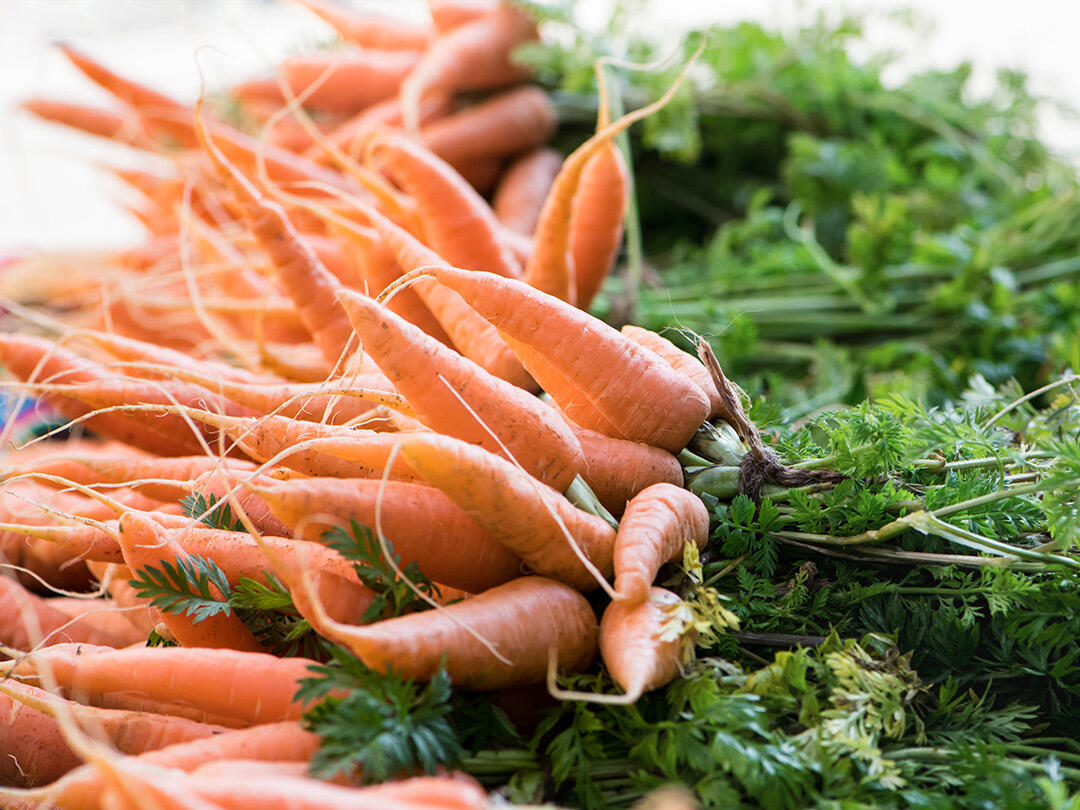
Carrots at Windrose Farm - Santa Monica Farmers Market
Mr. Bean
To Soak or Not to Soak
Chef Fox's recipe (specifically the water quantity) was written with soaked beans in mind. I decided to keep things simple and stick with that approach for this post. That being said, I'm not always a bean soaker and have made the entire dish same day. If you want to go that route, you will have to test, taste, and tweak the water quantity when making the stew with unsoaked beans since they absorb quite a bit more water during the cooking process.
If you'd like to read more about soaking beans, this is a helpful article that dispels the myth that the overnight bath is necessary. In a nutshell, soaking does cut the cooking time down (by about half?) but the texture doesn't cook up as evenly.
The Great Salt Debate
Some people insist that salting the cooking water toughens a bean's skin while others insist that salting is essential to flavor the legumes and prevent them from bursting. What I know for certain is you aren't going to properly season a bean from the outside once it's cooked. I opted to split the difference and salted the water halfway through the cooking process. My beans turned out to be creamy and flavorful so it seemed to work. I suspect you could add salt in the beginning (Mozza's Ceci recipe does) but I haven't tried that with anything other than garbanzos.
Captain Obvious
Don't cook different kinds of beans together. I instinctively knew not to do this but thought “why not experiment!" and did it anyway. After 4+ hours of cooking (for unsoaked legumes), I ended up having to spread the beans out on a baking sheet and painstakingly separate them into perfectly tender and not yet finished piles. Add to this fun the fact that I had used dried cranberry and Tongues of Fire which are virtually twins when cooked. Lesson confirmed.
Texture
I strongly prefer that the vegetables in this stew not have any sort of crunch or bite. They should blend together harmoniously without being mushy. I finally got things right on my most recent attempt and was happy to have documented the chop size of each vegetable. You don't have to be quite that meticulous, but I've included the relevant notes below under "Instructions" in the event that you want a point of reference. And as mentioned above under "Hemicellulose", be sure to cook the vegetables to the desired texture before adding the tomato paste.
Original vs. Adapted
Ingredient Measurements
The cookbook suggests using 60 grams of fresh rosemary needles and I suspect the "0" snuck in there by accident. 6 grams of rosemary needles is plenty. I actually pulled that amount back to 5 3/4 grams since Windrose's rosemary is particularly fragrant and can be a flavor diva. You can always adjust up to 6 grams if desired.
Beans
The recipe calls for Rancho Gordo's Yellow Eyed Beans but I went with dried cranberry beans from Two Peas in a Pod at the Santa Monica Farmers Market. Chef's discretion.
Croutons
I opted to use oil from some Garlic Confit that I had in the freezer. Garlic Confit should be in your freezer. If needed, just substitute regular extra-virgin olive oil as the original recipe specifies. Also, I dry fresh bread slightly in a 275-degree oven rather than leaving it out overnight. From a food science standpoint, this step is more important for dishes such as Thanksgiving stuffing and really isn't necessary for the croutons if you don't want to bother. Just make sure the bread is a touch stale or dried out.
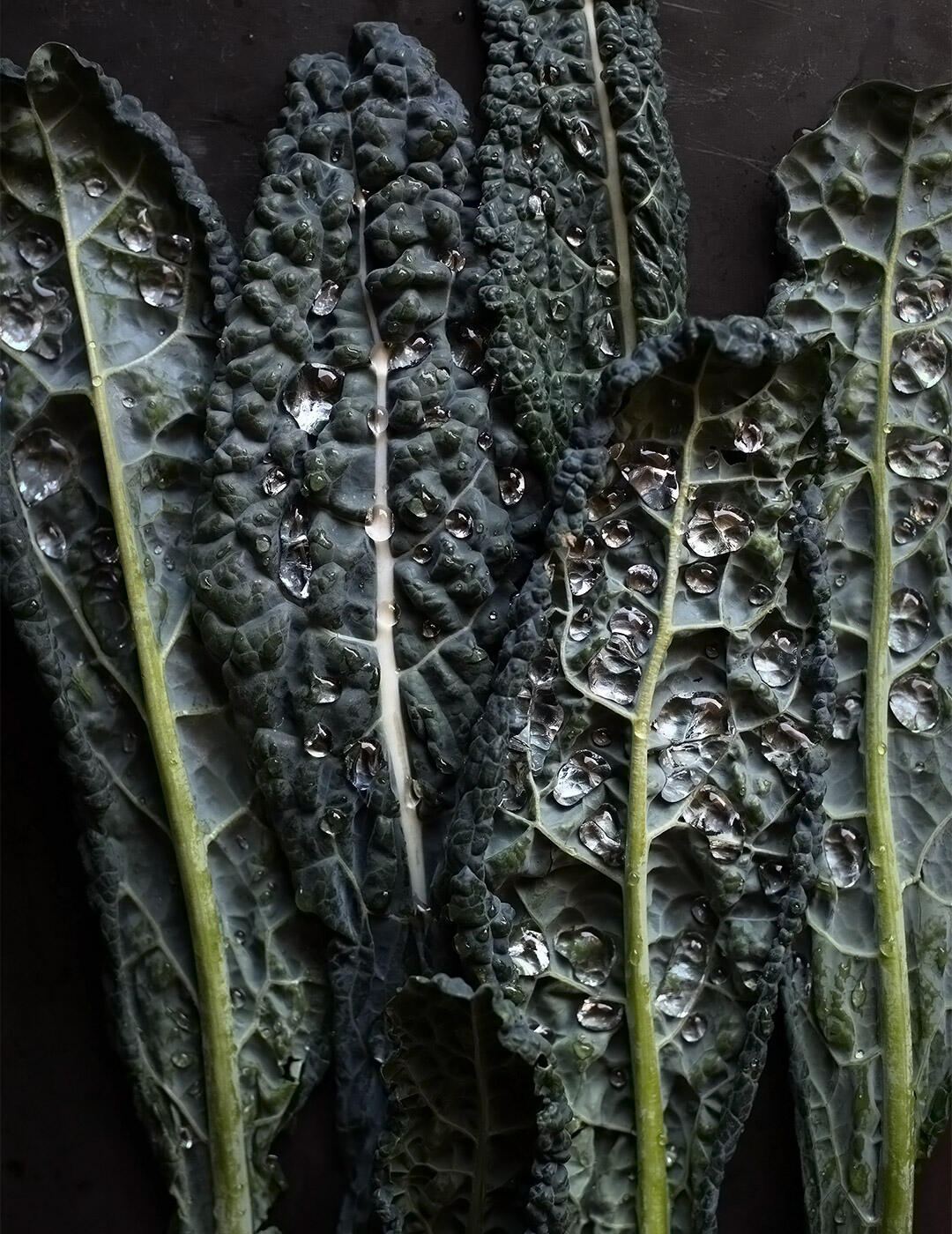
Black Kale from Finley Farms - Santa Monica Farmers Market
Farmers | Artisans
I make an effort to source my food from California artisans with a special focus on the Santa Monica Farmers Market. Below is a list of the folks who contributed to this dish.
- Finley Farms // Black Kale, Leeks, Celery
- Windrose Farm // Carrots, Rosemary
- Trattore Farms // Home Chef's Blend Olive OIl
- Coleman Family Farms // Parsley
- Two Peas in a Pod // Dried Cranberry Beans
- Milliken Family Farms // Heirloom Garlic, Onions
- Grist & Toll // Hard White Stone-milled Flour
- Kandarian Organic Farms // Khorasan Wheat Berries
- Central Milling // High Mountain and ABC Flour
Tools
Ingredients (Serves 6-8)
Beans
- 1 pound (455 grams) dried beans, soaked overnight and liquid discarded
- 2 sprigs rosemary
- 1 leek (whites and light green only), halved lengthwise
- 2 celery stalks, cut in half
- 1 carrot, peeled and sliced lengthwise
- 1 garlic head
- 13 stems parsley
- 2 tablespoons extra-virgin olive oil
- 2 teaspoons flake-style salt
- Freshly ground pepper
Stew
- 1 bunch of kale (5 ounces after prep), cut into approximately 2-inch pieces Note: I used black kale.
- 8 ounces (225 grams) carrots, 1/2-inch chop
- 8 ounces (225 grams) celery, sliced into 1/8 to 1/4-inch pieces
- 8 ounces (225 grams) leeks, cut lengthwise and then into 1/8 to 1/4-inch wide half moons
- 5 3/4 grams fresh rosemary needles Note: See "Original vs. Adapted" above.
- 3/4 cup extra-virgin olive oil
- 1/2 cup minced garlic
- 1 teaspoon chili flakes
- 1 cup (255 grams) tomato paste
Croutons
- 2 tablespoons garlic confit oil Note: Garlic Confit freezes beautifully and is the secret ingredient you'll never want to be without. Substitute regular extra-virgin olive oil if necessary.
- 2 tablespoons extra-virgin olive oil
- 4 thick slices of day-old rustic bread such as sourdough, crust removed
- Flake-style salt and freshly ground pepper
Instructions
Beans
- Add 12 cups of filtered water to a Dutch oven or similar large stew pot.
- Strip the rosemary stems and break them in half. Place the needles (you'll have about 7 grams) in a small container, cover with plastic, and refrigerate for later in the process.
- Slice the garlic head in half width-wise (this will slice each clove in half).
- Wrap the parsley sprigs and two garlic halves in a single layer of fine cheesecloth then secure with twine.
- Tie the rosemary stems, carrot, leeks, and celery together with twine.
- Drop both bundles into the water.
- Add 2 tablespoons of extra-virgin olive oil to the water, bring to a boil, then add the soaked beans.
- Resume the boil briefly, then lower the heat so that the water is at a very gentle simmer.
- Set two timers - one for 20 minutes to add the salt and one for 45 minutes to taste the beans and check on the progress.
- Simmer uncovered and skim any foam that rises to the top.
- After 20 minutes, add 2 teaspoons of flake-style salt.
- After 45 minutes, test the beans for doneness. Continue to cook as needed.
- When the beans are done, discard the leek bundle.
- Press the parsley bundle against the side of the pot to extract any liquid and then discard.
- Add 20 cranks of freshly ground pepper and 1-2 more teaspoons of salt to taste. The broth should be delicious as it's the base for your stew.
- MAKE AHEAD: You can cool and refrigerate the beans in the pot with their liquid until the next day if you wish. Just cover with plastic wrap.
Stew
- Transfer the beans and broth to a bowl, cover with plastic, then wipe the Dutch oven clean.
- In the clean Dutch oven, heat 1/2 cup extra-virgin olive oil over a medium flame.
- Add the carrots and pinch of flake-style salt, then sauté for about 5-7 minutes to give them a running start.
- Add 1/4 cup more extra-virgin olive oil and then the leeks, celery, and greens, another small pinch of flake-style salt, and a few cranks of peppers.
- Cook until the vegetables are tender, stirring frequently (about 12-15 minutes). Note: After 10 minutes, the kale will start to look quite wilted on the edges. If the pan seems dry, add an additional splash of olive oil. And as mentioned under "Hemicellulose", the vegetables don't cook up much in the final steps so you want to get them to the target texture before proceeding. Vegetables with too much bite, especially the carrots, can be distracting with everything that's going on in this recipe.
- Add the garlic, rosemary, and pepper flakes, then stir for 30 seconds until fragrant.
- Push the veggies to the side (creating a clear space in the middle of the pot) and then add the tomato paste.
- Mash and stir the tomato paste for 2 minutes so it can toast.
- Add the bean broth to the center, slosh it around with the tomato paste, then add the beans and gently stir everything together.
- Bring the pot to a very gently simmer for 10 minutes so the flavors can marry.
- Adjust the salt and pepper as needed.
- Cool and refrigerate or move on to the next step. Note: Stews tend to benefit from a cold nap since it allows the flavors to marry up.
Croutons
- Line a plate with 2 layers of paper towels and set aside.
- Tear the bread into pieces.
- Add 2 tablespoons of garlic confit oil and 1 tablespoon of regular extra-virgin olive oil to a medium non-stick pan and heat over a medium flame.
- When the oil is shimmering, add the bread pieces without crowding them.
- Cook for 7-10 minutes, turning occasionally, until golden and crispy. Add the remaining olive oil if the pan starts to look dry.
- Transfer the croutons to the lined plate, and sprinkle with flake-style salt and freshly ground pepper.
